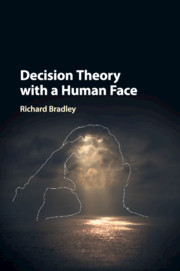Book contents
- Frontmatter
- Dedication
- Contents
- List of Figures
- List of Tables
- Preface
- Introduction
- PART I RATIONALITY, UNCERTAINTY AND CHOICE
- PART II PROSPECTIVE RATIONALITY
- PART III FACING THE WORLD
- PART IV RATIONALITY WITHIN BOUNDS
- 11 Imprecise Bayesianism
- 12 Changing Your Mind
- 13 Decision Making under Ambiguity
- 14 Confidence
- Appendix: Proofs
- Bibliography
- Index
13 - Decision Making under Ambiguity
from PART IV - RATIONALITY WITHIN BOUNDS
Published online by Cambridge University Press: 11 October 2017
- Frontmatter
- Dedication
- Contents
- List of Figures
- List of Tables
- Preface
- Introduction
- PART I RATIONALITY, UNCERTAINTY AND CHOICE
- PART II PROSPECTIVE RATIONALITY
- PART III FACING THE WORLD
- PART IV RATIONALITY WITHIN BOUNDS
- 11 Imprecise Bayesianism
- 12 Changing Your Mind
- 13 Decision Making under Ambiguity
- 14 Confidence
- Appendix: Proofs
- Bibliography
- Index
Summary
INTRODUCTION
Agents must make decisions in situations characterised by uncertainty that differs both in kind and in severity. Differs in kind because they face not only factual uncertainty about the state of the world but also option uncertainty about what the consequences would be of performing one or other of the actions available to them, evaluative uncertainty about the desirability of these possible consequences and modal uncertainty about the space of relevant contingencies. Differs in severity because the quality, amount and coherence of the information that the agent has about relevant prospects can vary to a considerable degree. Mainstream Bayesian decision theory recognises some distinctions in severity (between risk and uncertainty, for instance) but measures all the different kinds of uncertainty in the same way, namely by means of a probability function defined on the set of possible states of the world.
In the first two parts of the book, I argued that such reduction of all uncertainty to factual uncertainty is not always possible or useful, and offered an alternative theory that was applicable even when it was not. Firstly, the probability measure of factual uncertainty was complemented with a desirability measure of evaluative uncertainty that explicitly incorporated dependence on both beliefs about the facts and belief-independent judgements of value, and which could be revised as these beliefs and evaluations changed. Secondly, option uncertainty was captured by a suppositional probability on prospects conditional on an intervention of some kind. These fed into a decision rule prescribing choice, from the set of available options, of the ones that maximise expected desirability gain, relative to the status quo, on the supposition of its performance. When options can be formulated as Savage-style acts this decision rule coincides with that of maximising subjective expected utility.
This broadly Bayesian decision theory shares with its mainstream cousins the assumption that agents come to decision problems equipped with a complete set of probability and desirability judgements. It is, in other words, a decision theory suitable for a maximally opinionated agent. This implies that, if decision makers want to use such a Bayesian decision theory as a guide to their choices, then they need to reach precise judgements on at least all contingencies relevant to the decision problem they face.
- Type
- Chapter
- Information
- Decision Theory with a Human Face , pp. 262 - 288Publisher: Cambridge University PressPrint publication year: 2017



